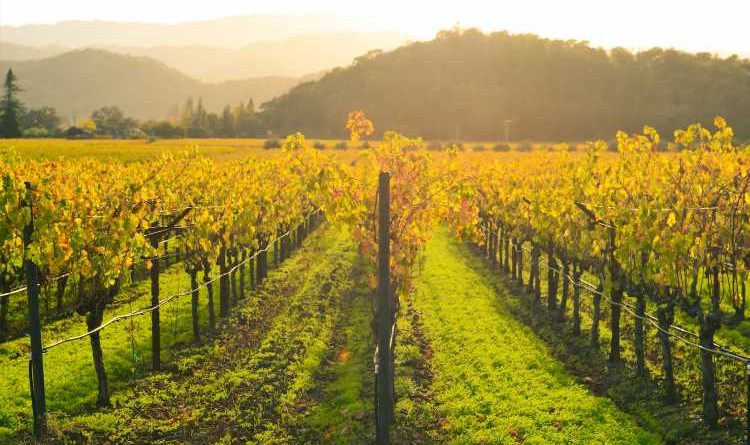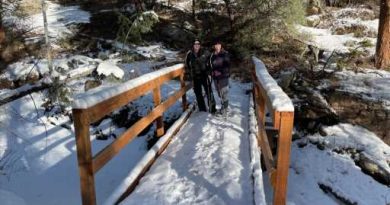California’s Lockdown: What Travelers Need to Know
© Photo by Shutterstock
California Begins Reopening for Travel
Photo by Shutterstock Under the order, wineries are among the numerous businesses affected. On December 3, California Governor Gavin Newsom announced a regional stay-home order that went into effect as each region within California hit less than 15 percent intensive care unit (ICU) capacity within its hospitals.
The order divides California into five regions (and the counties they encompass):
- Northern California: Del Norte, Glenn, Humboldt, Lake, Lassen, Mendocino, Modoc, Shasta, Siskiyou, Tehama, Trinity
- Bay Area: Alameda, Contra Costa, Marin, Monterey, Napa, San Francisco, San Mateo, Santa Clara, Santa Cruz, Solano, Sonoma
- Greater Sacramento: Alpine, Amador, Butte, Colusa, El Dorado, Nevada, Placer, Plumas, Sacramento, Sierra, Sutter, Yolo, Yuba
- San Joaquin Valley: Calaveras, Fresno, Kern, Kings, Madera, Mariposa, Merced, San Benito, San Joaquin, Stanislaus, Tulare, Tuolumne
- Southern California: Imperial, Inyo, Los Angeles, Mono, Orange, Riverside, San Bernardino, San Diego, San Luis Obispo, Santa Barbara, Ventura
The order is currently in effect in the Bay Area, San Joaquin Valley, Southern California, and the Greater Sacramento region. Only the Northern California region, which at press time was at nearly 30 percent ICU bed availability, remains exempt.
Once implemented, the order remains in effect for at least three weeks after which it will be assessed on a weekly basis. As of the start of January, all four regions where the order is in effect were projected to have the order continue into the month of January.
It comes as California is experiencing record numbers of infections—the state recorded a staggering 74,000 new coronavirus cases on January 4, according to the Los Angeles Times. That is 11 percent above the previous record of 66,726 cases, set on December 28, and is particularly troubling given that prior to December, the state had not topped 23,000 new cases in a single day, the Los Angeles Times reported.
“This is not a permanent state. There is light at the end of the tunnel. We are a few months away from truly seeing real progress with the vaccine, real distribution, real accessibility, real availability. We do not anticipate having to do this once again, but we really all need to step up. We need to meet this moment head-on and we need to do everything we can to stem the tide, to bend the curve,” Newsom said in the December 3 press conference announcing the new order.
What does California’s stay-home order entail?
So, what does the new directive mean for the state’s residents and those who were planning to visit?
First off, the order—true to its name—asks that residents stay at home and makes private gatherings of any size off limits. It also bans nonessential travel. Thus, while hotels and lodgings can stay open, the state has said they can only accommodate essential travel. The California Department of Public Health defines essential travel as travel related to work, study, critical infrastructure support, economic services, supply chains, health, immediate medical care, and safety and security.
“Except as otherwise required by law, no hotel or lodging entity in California shall accept or honor out-of-state reservations for nonessential travel,” the California Public Health Department stated. The exception is if the lodging is being used for a COVID-19-related quarantine, in which case the stay should be for the full length of the quarantine.
The stay-home order also prohibits restaurants from serving any kind of dine-in meals, including outdoor dining—they can offer takeout and delivery orders only. Campgrounds, wineries, bars, breweries, museums, zoos, aquariums, movie theaters, salons, and personal care services must all close. Retail stores can remain open at 20 percent capacity, and grocery stores at 35 percent.
Who can travel to California?
On November 13, the governors of California, Oregon, and Washington issued a joint statement asking residents and visitors entering from out of state, including international travelers, to self-quarantine for 14 days.
Effective December 18, travelers entering San Francisco from outside the Bay Area must quarantine for 10 days—or risk facing a misdemeanor charge, according to a new order from San Francisco’s Department of Public Health.
With the exception of healthcare and essential workers, anyone traveling or returning to San Francisco from outside the Bay Area (which is comprised of Alameda, Contra Costa, Marin, Napa, Santa Clara, Santa Cruz, San Mateo, Solano, and Sonoma counties) must quarantine for 10 days without contact with members outside of their household. The order is currently in place until at least January 7, 2021, and will likely be extended if the surge continues.
As of December 30, Los Angeles County is also requiring all incoming travelers coming from anywhere outside the Southern California region to quarantine for 10 days. According to L.A. health officials, a quarantine “means staying at home or another place of temporary shelter and away from contact with others, including those in one’s household (unless they are also under quarantine), for a period of 10 days.” The county asks that inbound travelers continue to monitor themselves for COVID-19 symptoms for 14 days after arrival.
There are currently no other restrictions on travel to California from within the United States, and all of the state’s major airports, including Los Angeles International Airport and San Francisco International Airport, remain open with flights operating.
As for international visitors, per U.S. government restrictions, foreign nationals who have been in China, Iran, Europe, the United Kingdom, or Ireland in the previous 14 days will be denied entry into California. U.S. citizens and permanent residents are exempt.
Are ski resorts open?
Ski resorts can stay open with health and safety protocols in place, but the order prohibits nonessential travelers from staying overnight. Interestingly, in the Tahoe region, that means there is a different standard for accommodations on the California side versus the Nevada side—Nevada properties remain open to visitors.
“All of our resorts have been diligently working since March to ensure their operations can adhere to ever-changing public health and safety requirements,” said Michael Reitzell, president of Ski California, which represents all of the state’s major ski areas, including resorts throughout the Lake Tahoe, Mammoth Mountain, and Big Bear Lake regions.
Reitzell said that he still expects skiiers and snowboarders to hit the slopes this season and that his hope is that when they do they “mask up, physically distance, and respect everyone. That’s how we’ll stay open all season.”
Are California beaches and parks open?
The majority of the beaches along California’s 840 miles of coastline are open but may have some restrictions in place, such as limited parking or capacity controls. The California Coastal Commission maintains an updated list of which beaches are open and the regulations put in place during the COVID-19 crisis.
The California state park system consists of 280 parks, beaches, and natural, cultural, and historic sites. Of those, 11 state parks were closed as of January 5. The rest are open for day use, but campgrounds will temporarily close as required by the stay-home order. The state park system advises visitors to check each park’s website for the most up-to-date information.
As for national parks, the majority are open, including Yosemite, Lassen Volcanic National Park, Joshua Tree National Park, Redwood National Parks, Sequoia National Park, and Kings Canyon National Park. Check their websites for the latest.
The order urges Californians to get outside. “Members of the same household are encouraged to maintain physical and mental health by going to a park, hike, walk or bike ride when safe to do so and socially distanced,” the order stated.
Are Disneyland, Legoland, and other theme parks open?
Disneyland and Disney California Adventure and most major theme parks remain closed in California. Some of the shops in the Downtown Disney District, however, are open. (The Disney Resort hotels, including Disney’s Grand Californian Hotel & Spa, Disney’s Paradise Pier Hotel, and the Disneyland Hotel all remain temporarily closed.)
Universal CityWalk at Universal Studios Hollywood is open from 12 to 8 p.m. daily.
The Legoland Hotel, Sea Life Aquarium, and Legoland California’s Miniland U.S.A. section were all still open at press time in the theme park’s Carlsbad location. But the new stay-home order says that amusement parks must close.
What if I need to change or cancel my California travel plans?
Just as with California’s first lockdown in the spring, it is not immediately clear which and how many hotels, resorts, and vacation rental owners in the state are strictly adhering to the new guidelines.
We checked in on some of our favorite hotels and found a wide variety of updates available, from no sign of the order on their website to being more forthcoming about it. The Lodge at Torrey Pines in San Diego has a note on its website that it remains open to offer accommodation for essential workers, for COVID-19 mitigation measures, and to provide housing solutions. The iconic Beverly Hills Hotel is informing guests that they will be required to confirm that they are abiding by the state’s order during check-in. Proper, a hotel in San Francisco, is open and welcoming guests, reminding them to make sure they are up to date on the latest travel restrictions.
Contact hotels and vacation rentals directly with any questions as they are likely all responding a little differently—while some may close, some may stay open for essential workers or to offer a quarantine space. Some, quite frankly, are turning a blind eye.
As for cancellations, many hotels had made their cancellation policies more lenient during the pandemic allowing for much greater flexibility and the option for a refund or credit in a case such as this. Vacation rental platforms like Airbnb and Vrbo, however, let the hosts dictate the cancellation policy, which means that travelers are beholden to the policy that was attached to the booking at the time they booked (host-selected policies can range from very flexible to extremely rigid).
All the major U.S. airlines waived their change fees for good this fall, so those who need to cancel or change their flights should not have a major issue doing so.
An evolving situation
As the number of cases climbs and (hopefully) recedes in California, additional closures and reopenings could take place throughout the state. Visit California has compiled a comprehensive list of links to all of the state’s city and county travel sites, which offer travelers resources for navigating what is and isn’t open in California.
This story was originally published on June 9, 2020, and was updated on January 6, 2021 to include current information.
>> Next: Hawaii Issues New Rules for Travelers—Here’s What You Need to Know
Source: Read Full Article




